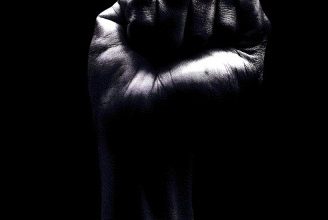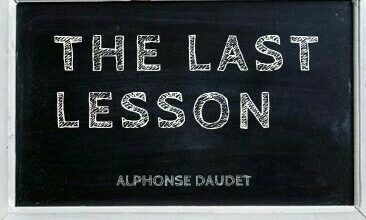
‘Trying to Talk With a Man’ by Adrienne Rich portrays a failing relationship, loaded with all the raw emotions and the visceral grappling that it often encompasses. The poet’s relationship with her partner used to be a happy one, full of music and cookies, movies, and ‘afternoons on the riverbank’. It’s a thing of the past now. Their relationship is now defined by a great deal of emotional distance. ‘Silence‘ is at the core of their relationship. The poem attempts to equate this dead relationship to the oppression involved in nuclear programs of wealthy nations. The US government’s tests in the desert oppress the people of the region, altering the landscape, turning settlements into ghost towns, and having untold long-term medical and environmental consequences.
Trying to Talk with a Man | Summary and Analysis
The poem is divided into nine stanzas and has 39 lines. The stanzas range from one to seven lines in length. The poem is about the anguish that comes with the end of a relationship. Rich and her husband have been attempting to ignore the fact that their marriage is failing, but now that they are alone in the desert together, they discover they have nothing relevant to say to each other. They must accept that their marriage is no longer viable. The poem examines the dangers that come with being in a relationship with a man. The husband is equated to a lethal weapon, capable of destroying Rich. Marriage is depicted here as a mastery of the woman by the man, rather than a meeting of equals. She must flee if she is to survive emotionally.
Trying to Talk with a Man | Analysis, Lines 1-2
Out in this desert we are testing bombs,
that’s why we came here.
The desert is a harsh, barren landscape, but it has become even more dangerous as a result of the nuclear tests. Rich’s marriage is a metaphor for the lifeless desert. The marriage is also linked to the bombs, and there is a sense that their relationship has devolved into a negative force. If they stay together, they will almost certainly cause each other great pain. The idea of “testing” is also crucial. The couple is putting their relationship to the test by traveling together to this location.
Trying to Talk with a Man, Lines 3-7
Sometimes I feel an underground river
forcing its way between deformed cliffs
an acute angle of understanding
moving itself like a locus of the sun
into this condemned scenery.
The poem’s atmosphere is one of dread, danger, and tension from the first line: ‘Out in this desert, we are testing bombs.’ The image of the ‘underground river/ forcing its way’ between the couple sets a tone of frustration and struggle. The ‘underground’ nature of the river acts as a metaphor for the distance between these two individuals. They don’t talk about these issues, preferring to pretend they don’t exist.
The river is associated with understanding and it moves at an ‘acute’ angle. The river flows at an “acute angle of understanding,” according to the poet. This suggests that when the poet and her husband finally confront their problems, they will learn something harsh and unpleasant. The phrase “condemned scenery” is used by the poet to refer not only to the desert but also, implicitly, to the battle royale of her marriage.
Rich has the impression that there is an underground river beneath this desolate and lifeless desert. With its “deformed cliffs,” the desert is strange and ugly, and it could represent their relationship, which has devolved into an ugly, barren, lifeless thing. The landscape is referred to as “condemned scenery” because the bombs are about to detonate.
The underground river can be viewed from a variety of perspectives. It could be a symbol of hope, implying that their relationship has life beneath the surface, even if it is deeply buried. It could also be the river as a source of knowledge buried deep within her. Rich is distressed to learn that this metaphorical river runs beneath their marriage’s surface and is “forcing” its way through it. It’s what she refers to as an “acute angle of understanding.” The word “acute” has two meanings: it can be used in mathematics which is linked here to the word “locus” or it can refer to sharp and severe pain.
Trying to Talk with a Man, Lines 8-14
What we’ve had to give up to get here –
whole LP collections, films we starred in
playing in the neighbourhoods, bakery windows
full of dry, chocolate-filled Jewish cookies,
the language of love-letters, of suicide notes,
afternoons on the riverbank
pretending to be children
Rich makes a list of things she and her husband did when they were in a good mood. If this is to be the end of their marriage, they will have to “give up” these things. The list is moving, with details like the description of “dry, chocolate-filled Jewish cookies,” implying that there is a part of Rich who fondly remembers these times. However, Rich mentions “suicide notes” in line twelve, which is a bit disconcerting. Both Rich and her husband had suicidal thoughts toward the end of their marriage. The inclusion of such a negative note in this list of typically sweet and loving elements of a relationship denotes that the marriage is coming to an end and none of this matters. Like the desert, their marriage is barren and lifeless. This stanza resembles a montage, a memory of their happier times together. In contrast to this, there are images of the arid, alien landscape of the desert, its ghosts, succulent plants, ‘deformed’ cliffs, and towns.
Trying to Talk with a Man, Lines 15-19
Coming out to this desert
we meant to change the face of
driving among dull green succulents
walking at noon in the ghost town
surrounded by a silence
Rich describes the journey she and her husband took to reach this desert observation point. The bombs will alter the landscape of the desert. When Rich refers to the people who will test nuclear weapons, she uses the word “we.” She shares responsibility for what will happen with the army. Is this the same as her marriage? This could also imply that she is aware that both her husband and she were responsible for its destruction. They came to a halt in a ghost town, which mirrors the silence and emptiness of their relationship.
Trying to Talk with a Man, Lines 20-25
that sounds like the silence of the place
except that it came with us
and is familiar
and everything we were saying until now
was an effort to blot it out –
coming out here we are up against it
Silence has multi-layered meaning here: the silence of the deserted town and the silence between Rich and her husband. They have tried, up until now, to avoid facing the reality of their marriage’s demise and to ignore the warning signs, but they can no longer do so. They have forced themselves to face reality by coming out to the desert together. The silence has grown and has become “familiar.” It’s become a part of their relationship, and they’re acutely aware of it in this peaceful setting. Small talks aren’t enough any longer, and they can’t hide the fact that they’ve run out of things to say to each other.
Trying to Talk with a Man, Lines 26-32
Out here I feel more helpless
with you than without you
You mention the danger
and list the equipment
we talk of people caring for each other
in emergencies – laceration, thirst –
but you look at me like an emergency
The couple is supposed to be safe in the observation post because they are in it together. However, there is always the possibility that the test will fail. Her husband brings it up, and they discuss how they and others would handle it if something went wrong. Ironically, they discuss how they would deal with people’s injuries, even though they have already hurt each other and are unable to heal those wounds. Rich is not comforted by the presence of her husband. She perceives herself to be in greater danger now that he is present. Although she has no reason to believe he will harm her physically, she believes she would be better off alone. He does not console her, and she believes their relationship has deteriorated to the point where it is causing her harm.
Trying to Talk with a Man, Lines 33-36
Your dry heat feels like power
your eyes are stars of a different magnitude
they reflect lights that spell out: EXIT
when you get up and pace the floor
Rich compares her husband to nuclear weapons, claiming that he could be just as dangerous to her as a nuclear blast. She doesn’t compare his eyes to stars in a romantic way. The poet’s description of her husband’s eyes as “stars of a different magnitude” is another striking metaphor. Although this is a lovely description, it also implies that his eyes are blazing with rage. After all, deep within the cores of stars is a nuclear reaction. Rich has reached the point where she believes their marriage is coming to an end, and he can only bring her more pain at this point. The EXIT sign on the door is reflected in her husband’s eyes. This is probably just another sign to Rich that their marriage is over and she needs to leave.
Trying to Talk with a Man, Lines 37-39
talking of the danger
as if it were not ourselves
as if we were testing anything else.
The poem’s final lines imply that their trip to the desert was a last-ditch effort to spend time together and see if their marriage could be saved. The lack of punctuation in the poem contributes to the tense atmosphere. In the poem, there are only three full stops. There is very little punctuation after stanza 5, and the poem unfolds as a torrent of imagery. This quickens the pace of the poem, implying that this couple’s time is running out. Her husband talks about the dangers of bombs and nuclear tests, but Rich knows that what was being tested was their relationship. They can’t deny their relationship’s failure, and there’s no point in pretending it isn’t over.
Trying to Talk with a Man | About the Author
Adrienne Cecile Rich was a poet and essayist. She was designated “one of the most widely read and influential poets of the second half of the twentieth century” and attributed with bringing “women’s and lesbians’ oppression to the forefront of poetic discourse.” Rich critiqued rigid feminist identities and coined “lesbian continuum,” which she defined as a female spectrum of solidarity and creativity. A Change of World (1951), Snapshots of a Daughter-in-Law: Poems 1954-1962 (1963), Diving into the Wreck: Poems 1971-1972 (1973), A Human Eye: Essays on Art in Society (2009) are some of her important works.




